The 1920s, known as the Jazz Age, was a period of unprecedented prosperity and social energy in America, and nowhere was this more visible than in Times Square. The district reached its peak as a global entertainment hub, defined by its spectacular theaters, illicit nightlife, and immense, bustling crowds.
The Golden Age of Broadway
The theater industry experienced its most productive decade in history. During the 1927 season alone, more than 250 shows opened on Broadway. The era was defined by lavish musical comedies and groundbreaking productions. In 1927, the musical “Show Boat” opened at the Ziegfeld Theatre, changing American theater with its serious storyline that integrated songs into the plot.
Alongside live theater, magnificent new movie palaces opened, attracting thousands of patrons. The Capitol Theatre and the Roxy Theatre, which opened in 1927, were two of the largest and most ornate. These were not simple cinemas; they offered a full evening’s entertainment that included a live orchestra, singers, dancers, and a feature film for a single ticket price.
Read more
Prohibition and Hidden Nightlife
The nationwide ban on alcohol, known as Prohibition, did little to slow down the party in Times Square. The law simply pushed the vibrant nightlife scene behind closed doors. The side streets surrounding Broadway were filled with hundreds of speakeasies—hidden bars and nightclubs that illegally sold alcohol.
These establishments were often run by notorious gangsters like Owney Madden and Larry Fay. Inside, patrons could drink cocktails, listen to live jazz bands, and dance the Charleston. The constant threat of police raids added a sense of danger and excitement to the atmosphere. This underground scene made Times Square the glamorous, illicit heart of New York City after dark.
Crowds, Cars, and Congestion
The popularization of the automobile transformed the physical landscape of Times Square in the 1920s. For the first time, the streets became choked with traffic, as cars, taxis, and buses competed for space with the still-present streetcars. The sidewalks were constantly packed with a dense mix of New Yorkers and tourists flocking to the area’s attractions.
To manage the chaotic flow of people and vehicles, the city installed its first automated traffic signals in the district. The constant movement, the roar of engines, and the sheer density of the crowds became a defining feature of the Times Square experience.
The End of an Era
The decade of nonstop celebration came to a sudden and dramatic end. On October 29, 1929, the U.S. stock market crashed, triggering the start of the Great Depression. In the days following the crash, anxious crowds gathered in Times Square, staring up at the electric news zipper on the Times Tower as it reported the grim financial news. The boundless optimism of the Roaring Twenties had vanished.


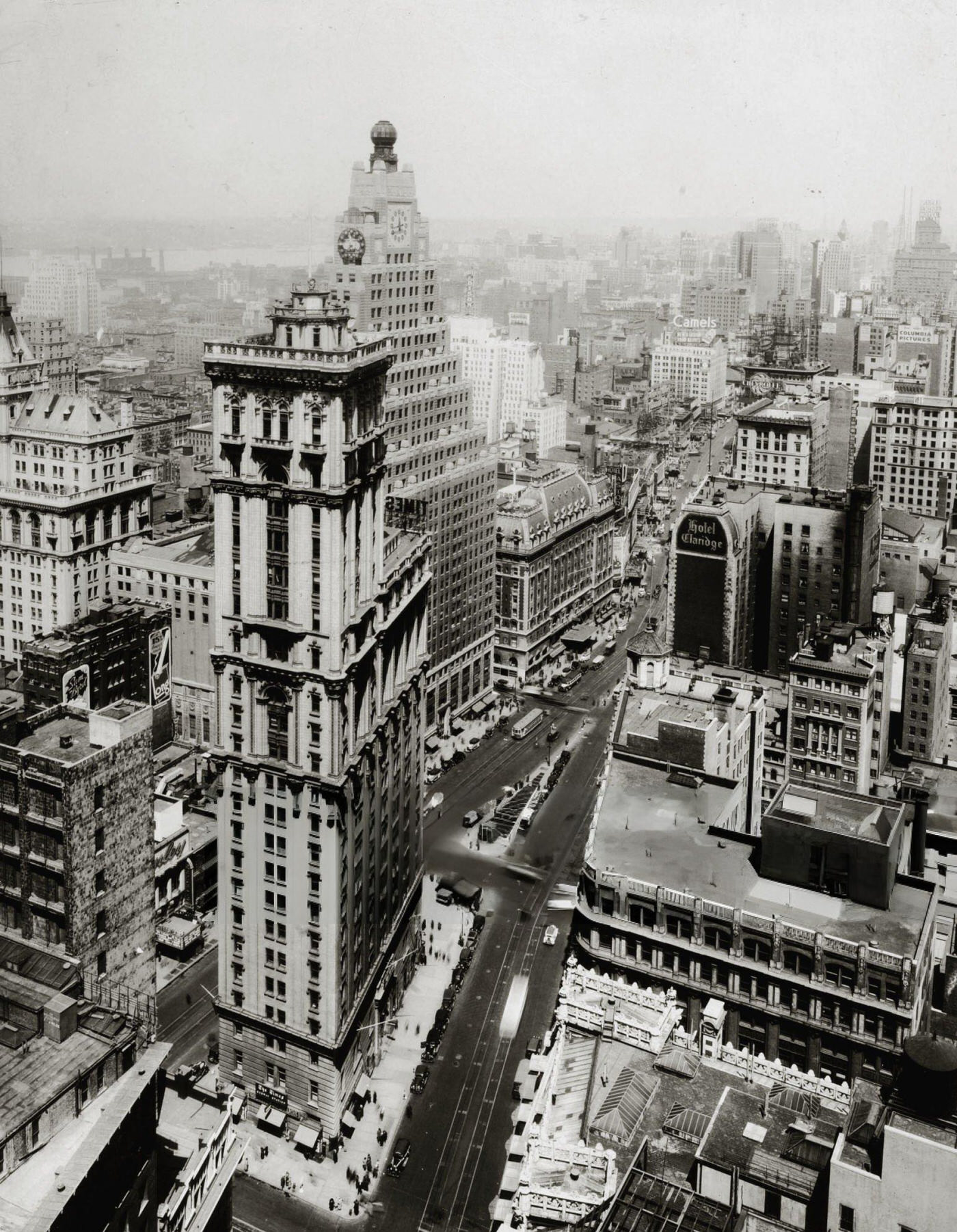


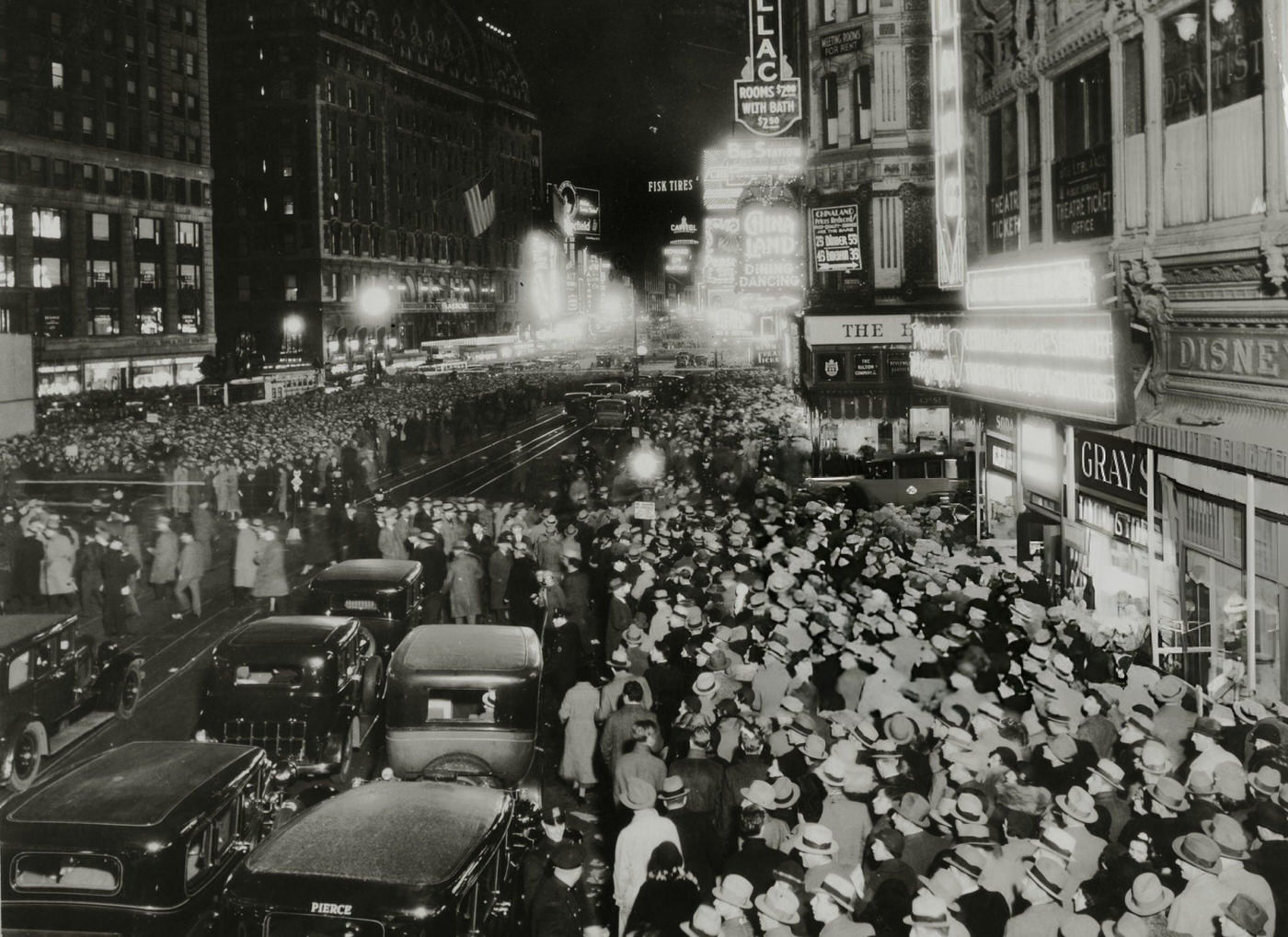
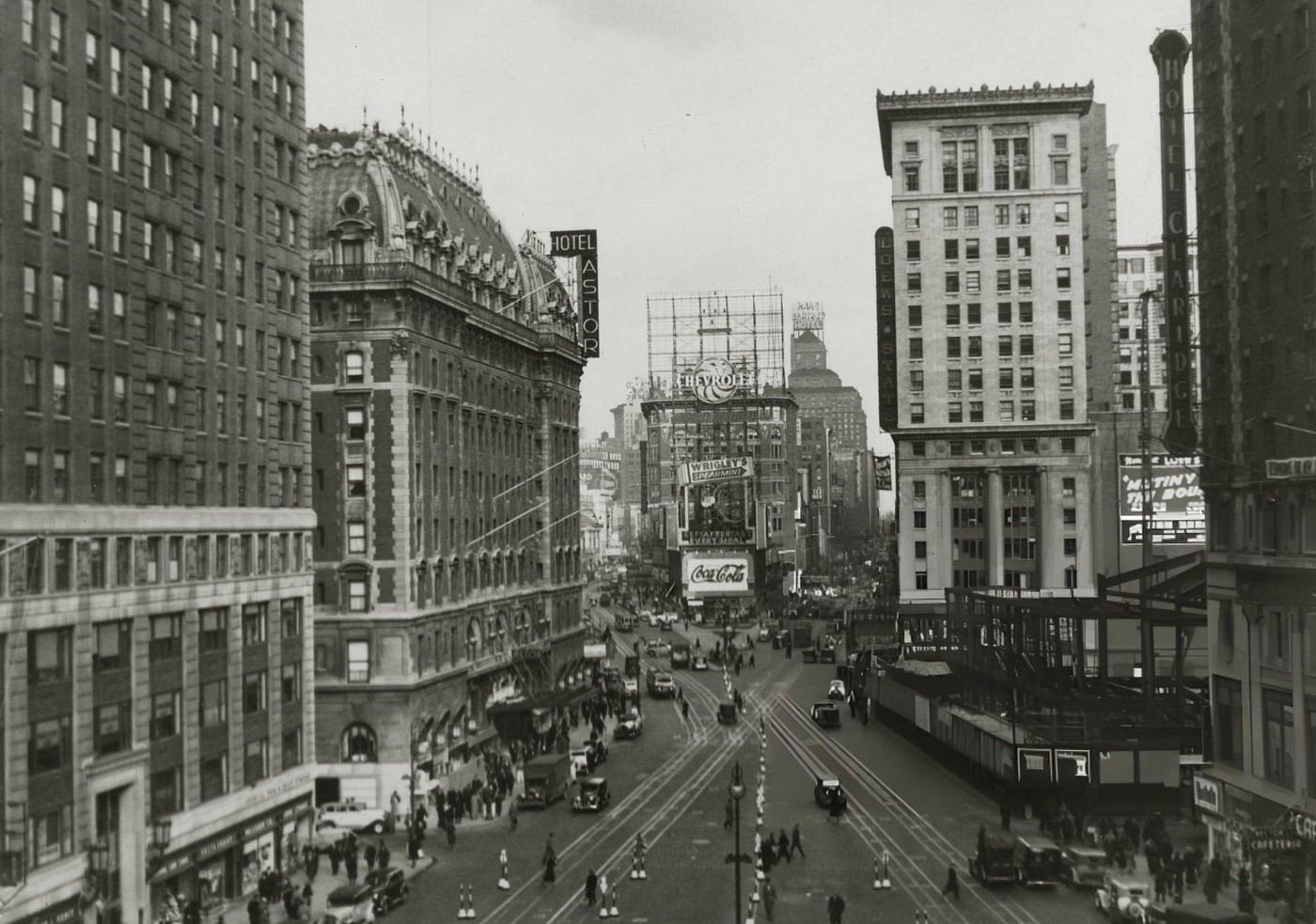

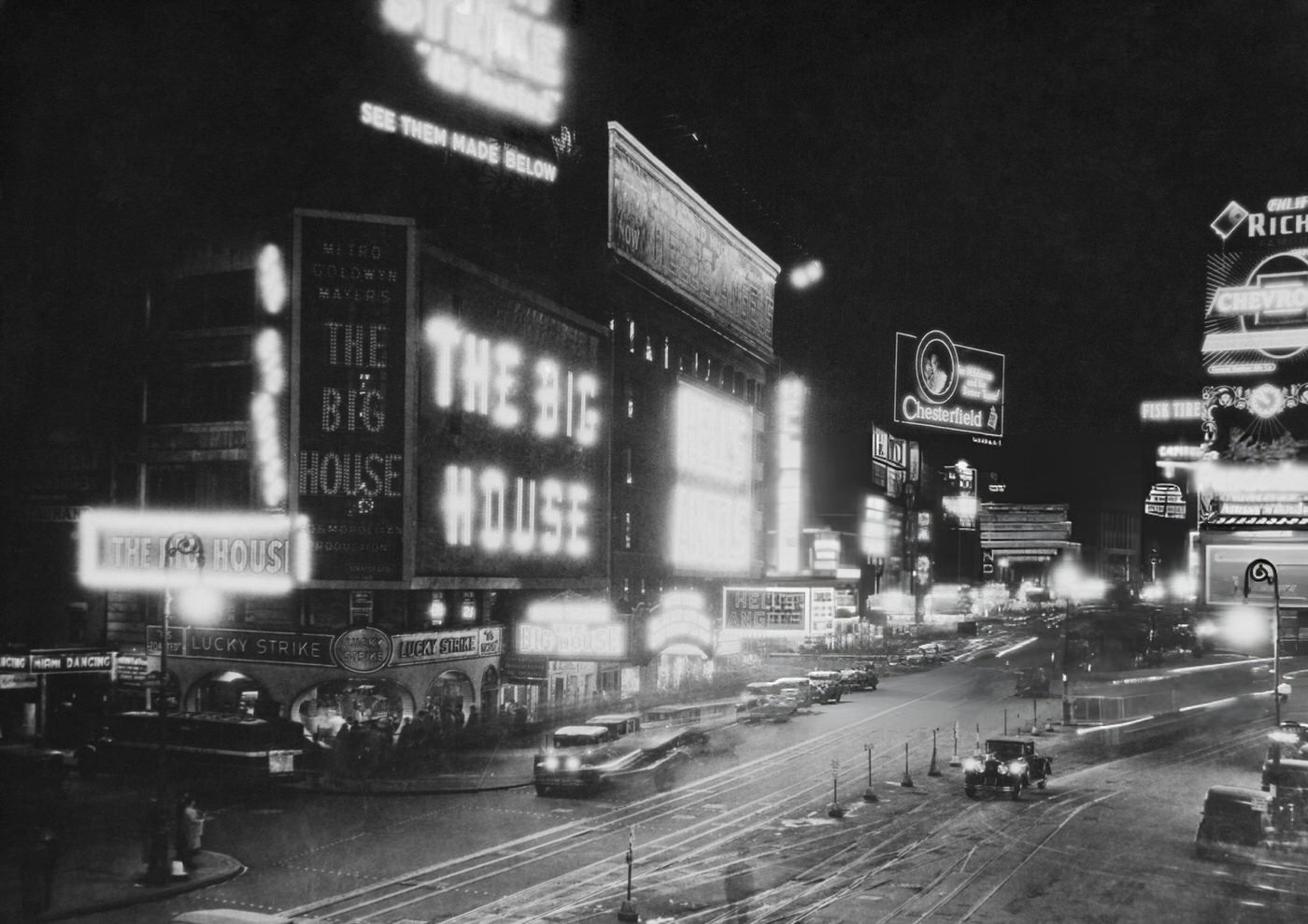
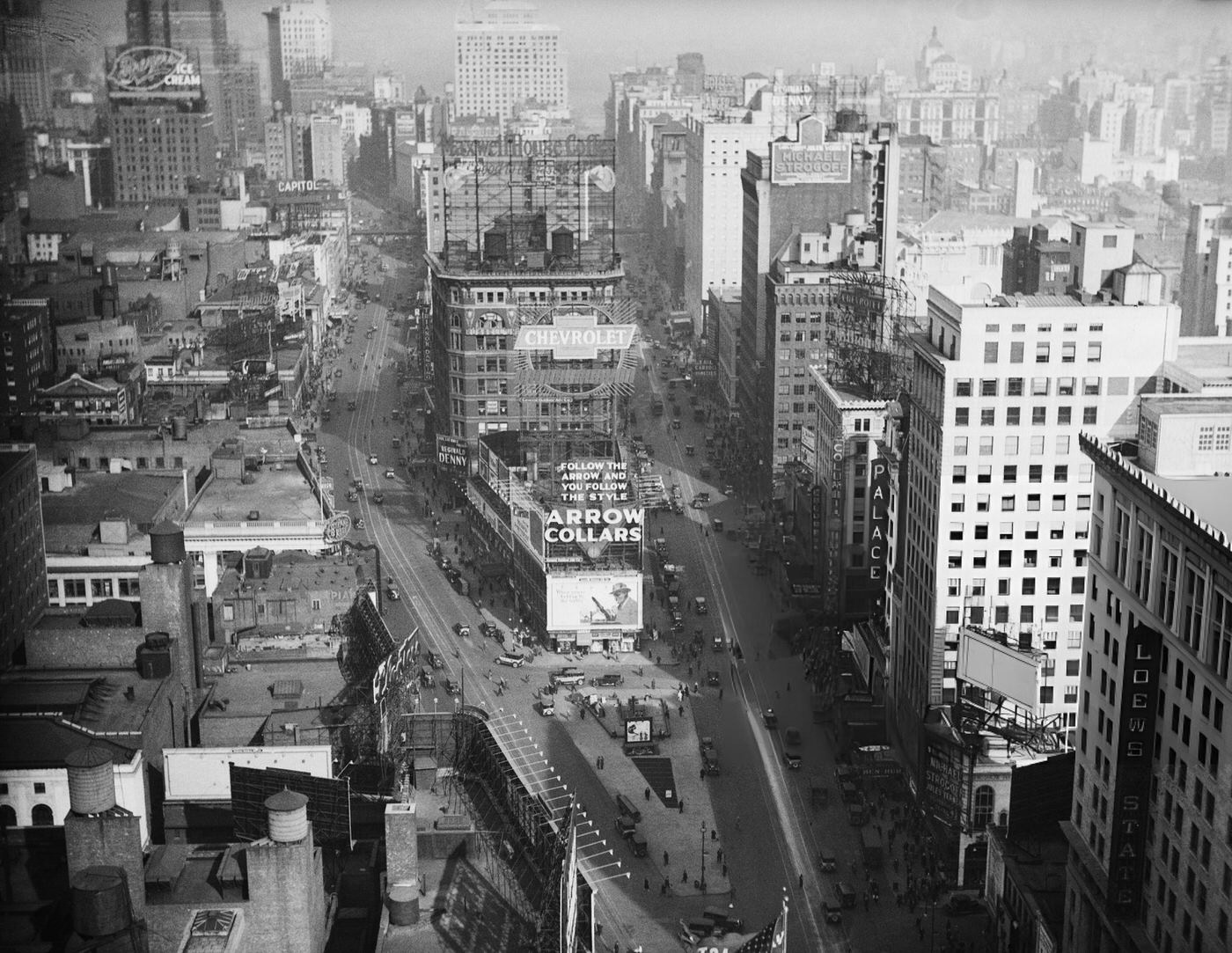

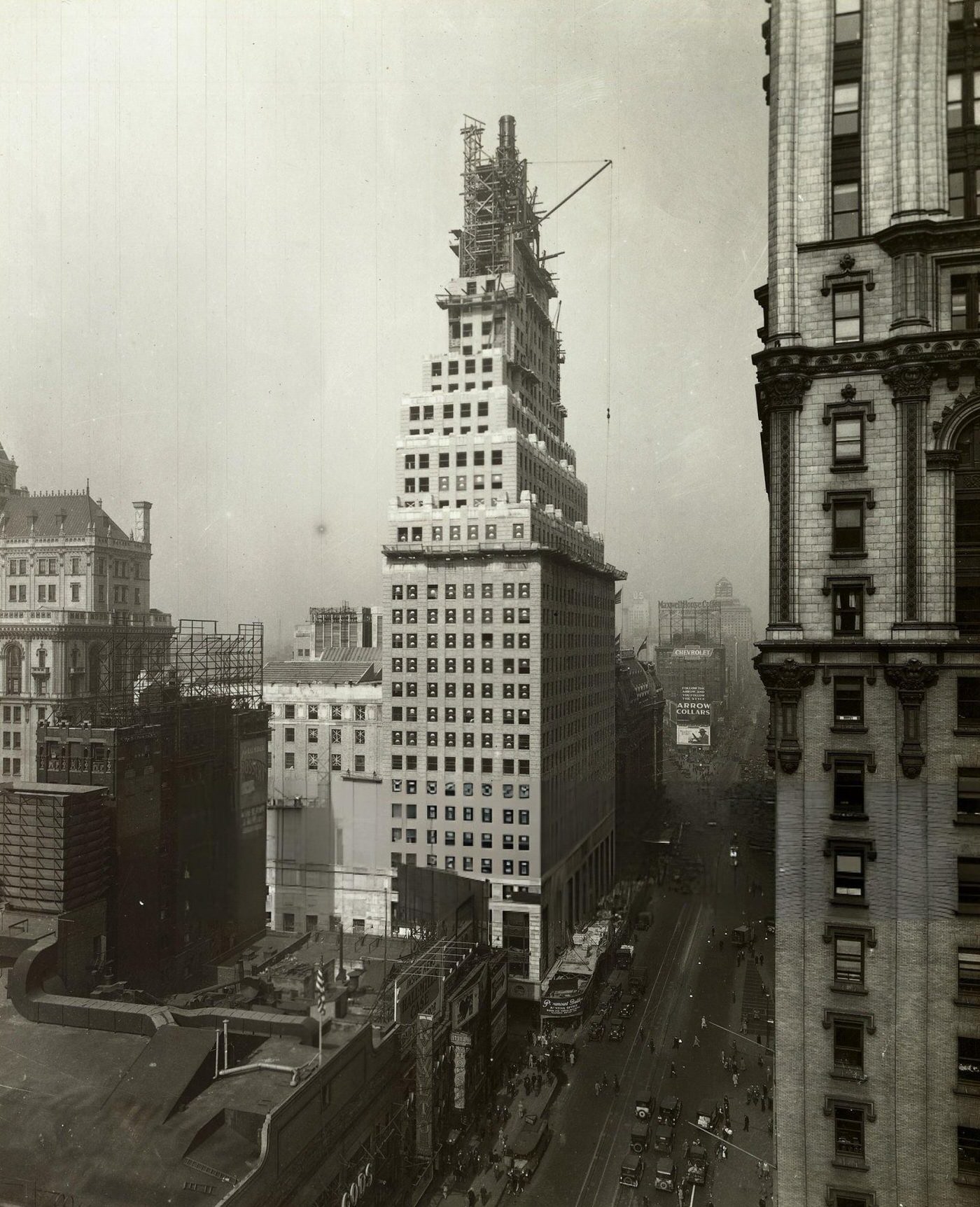

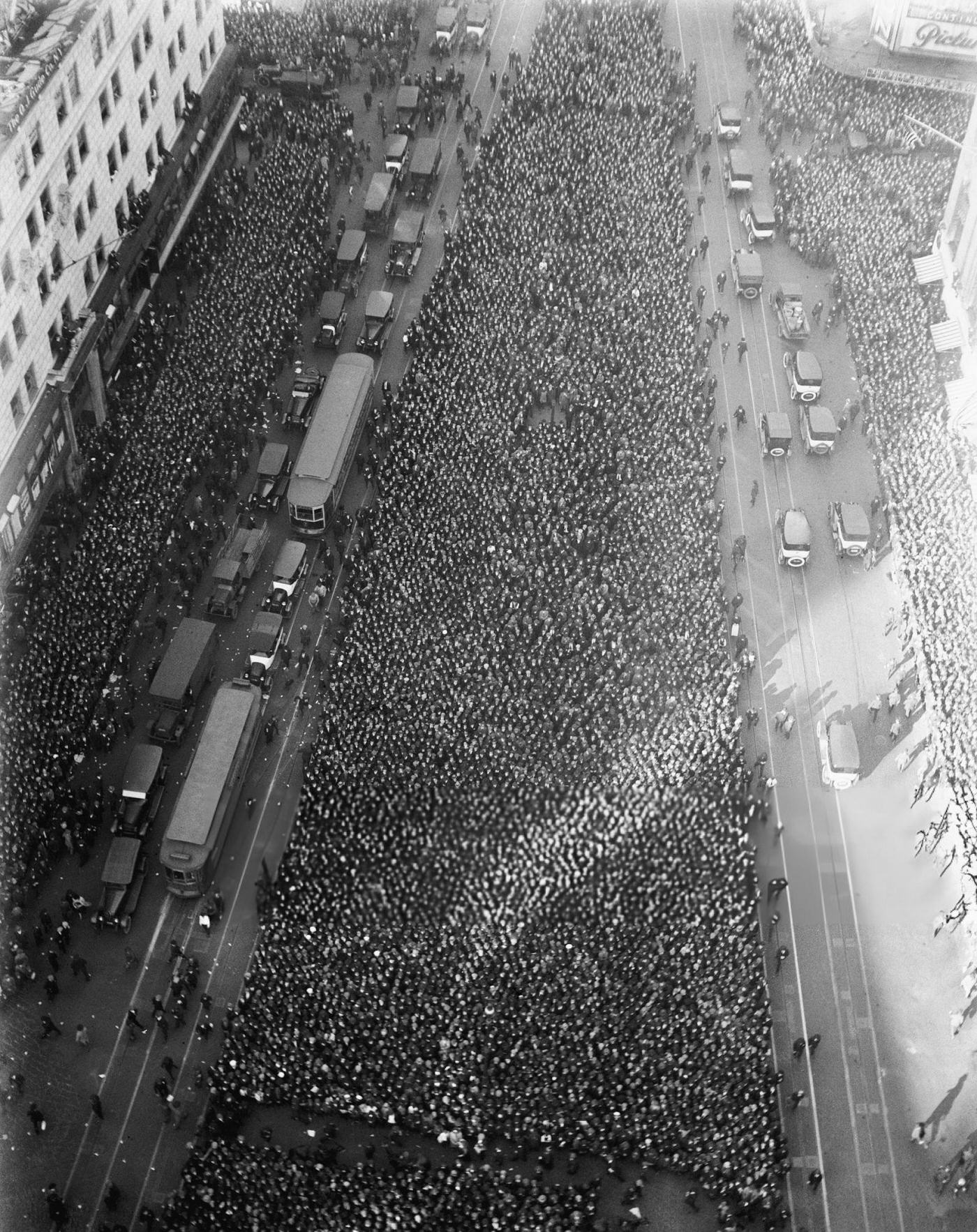
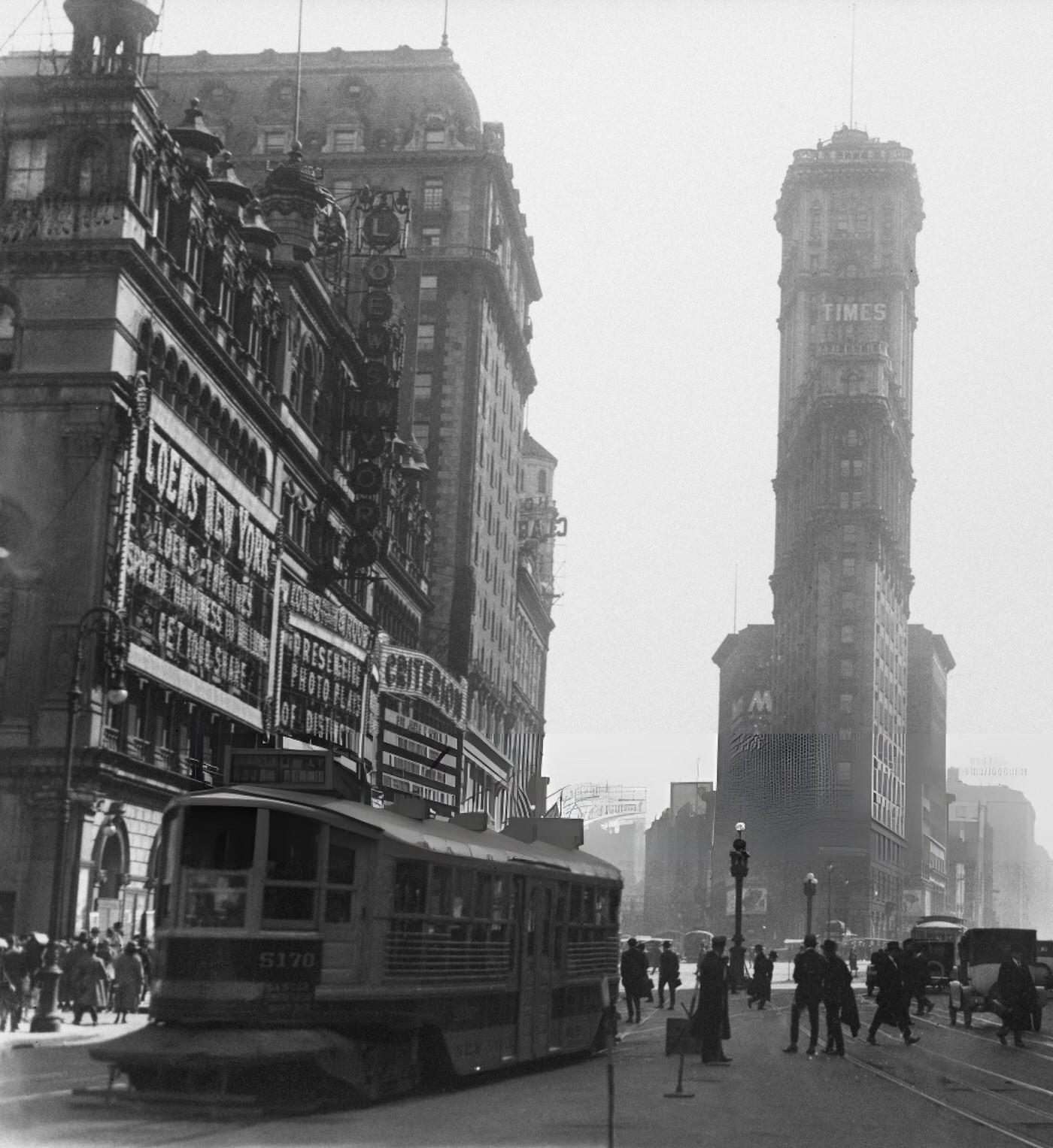
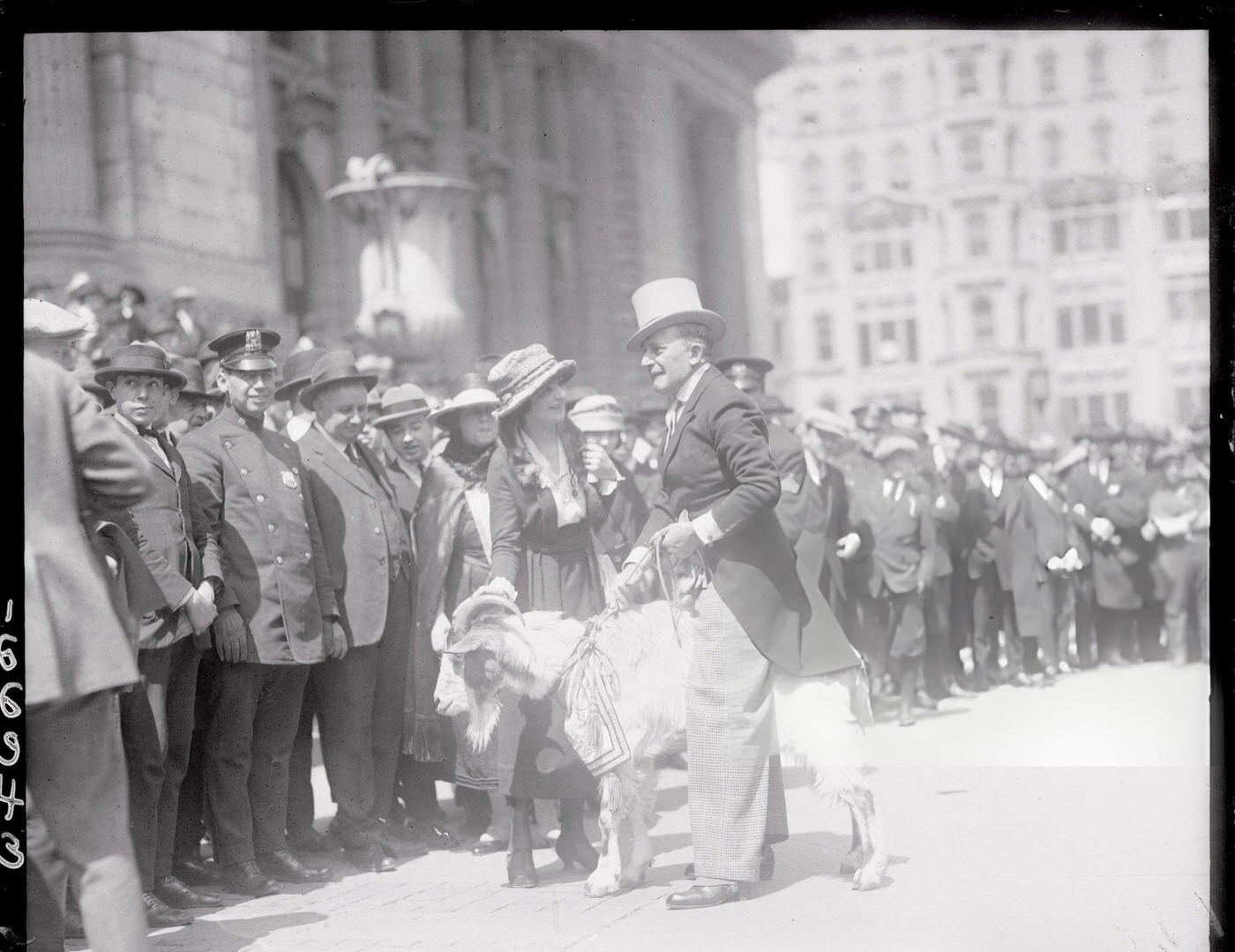

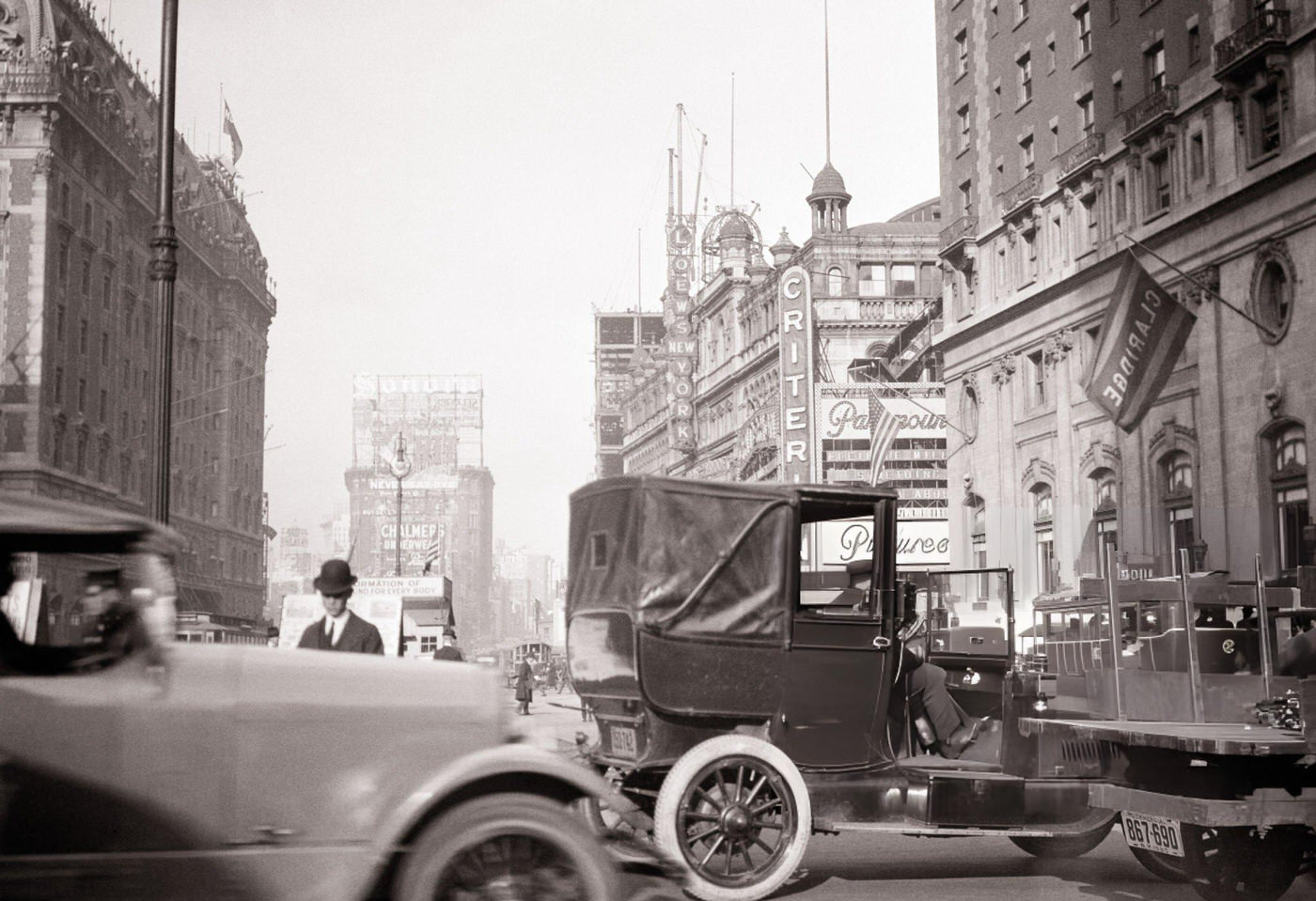
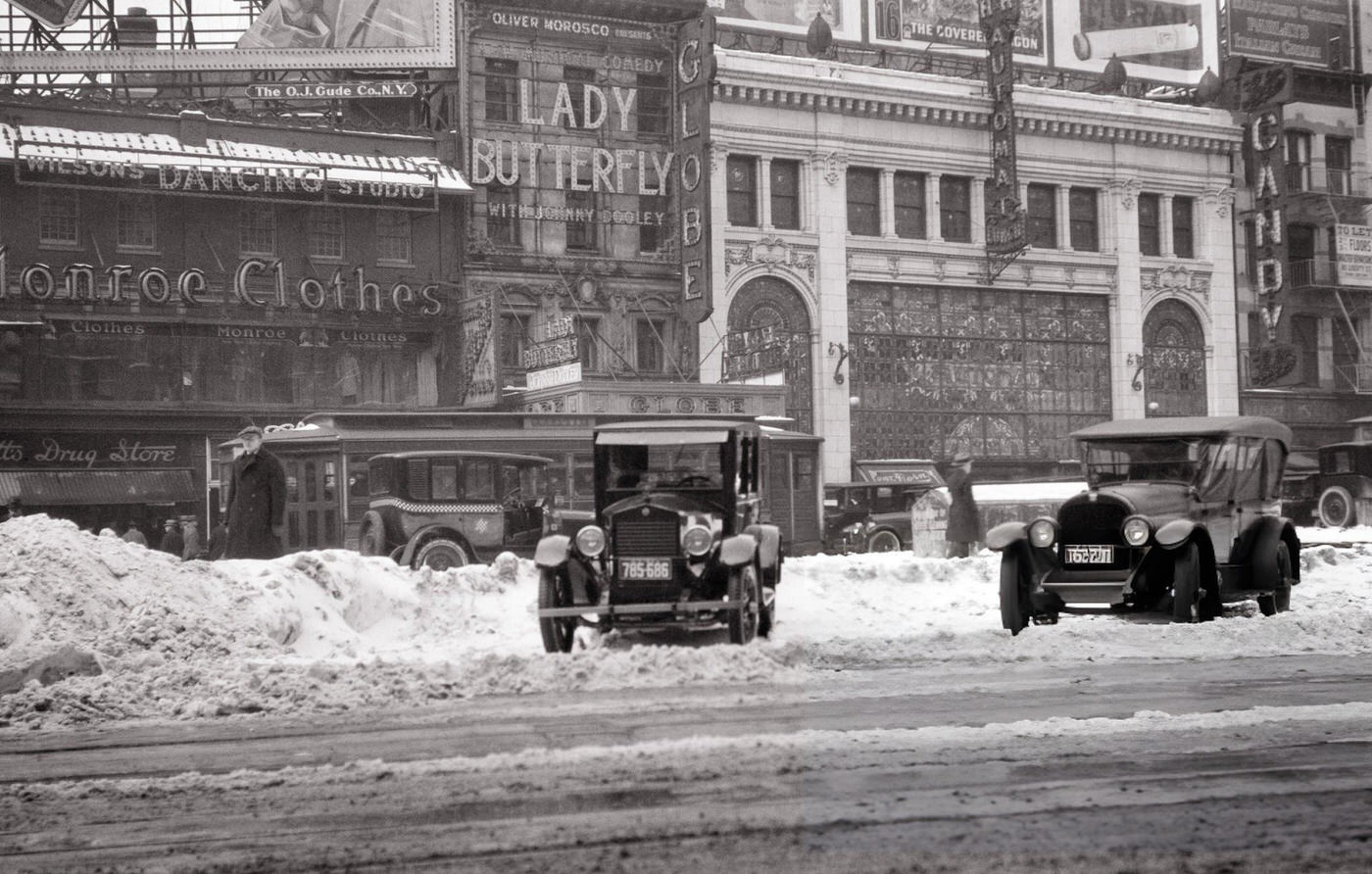
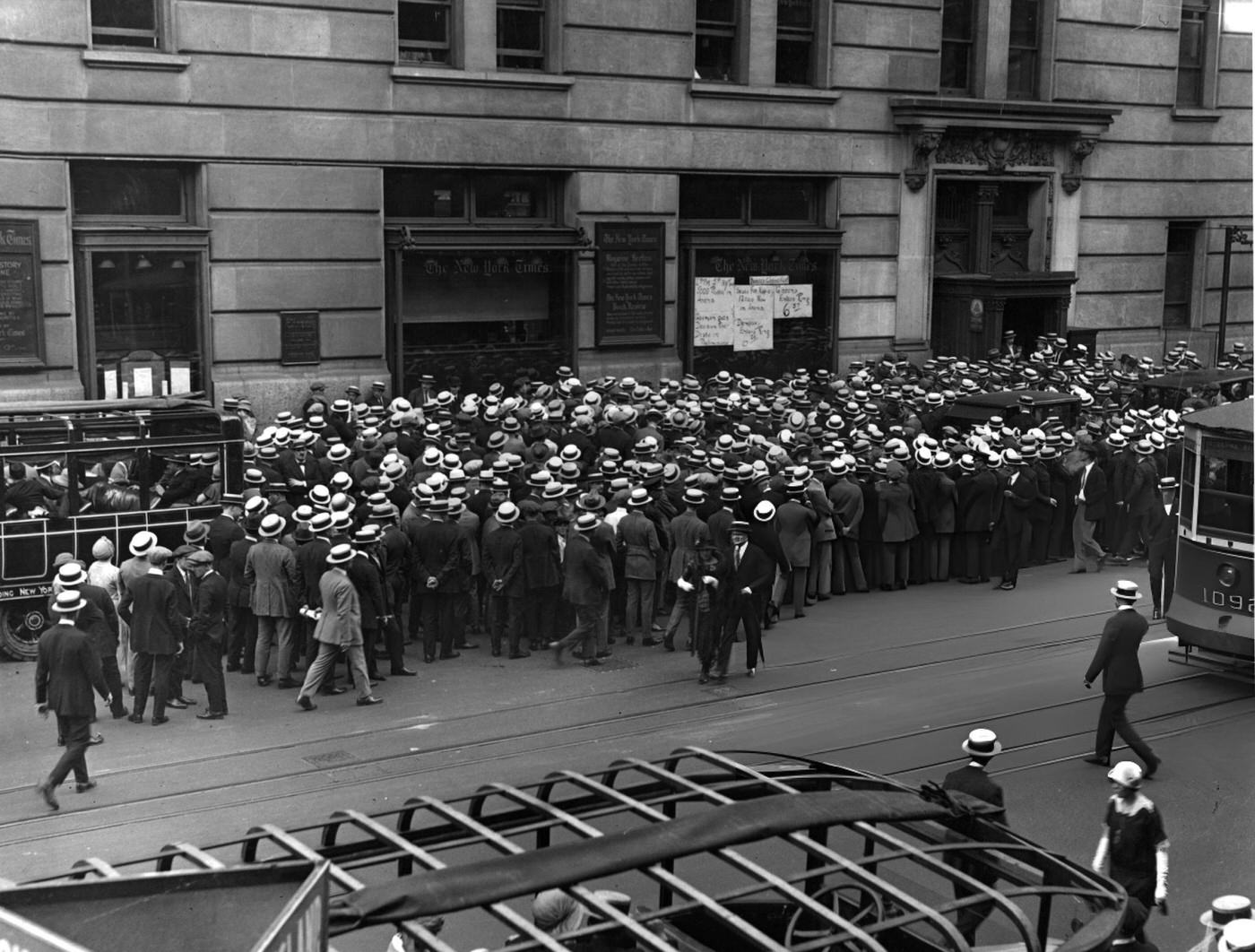
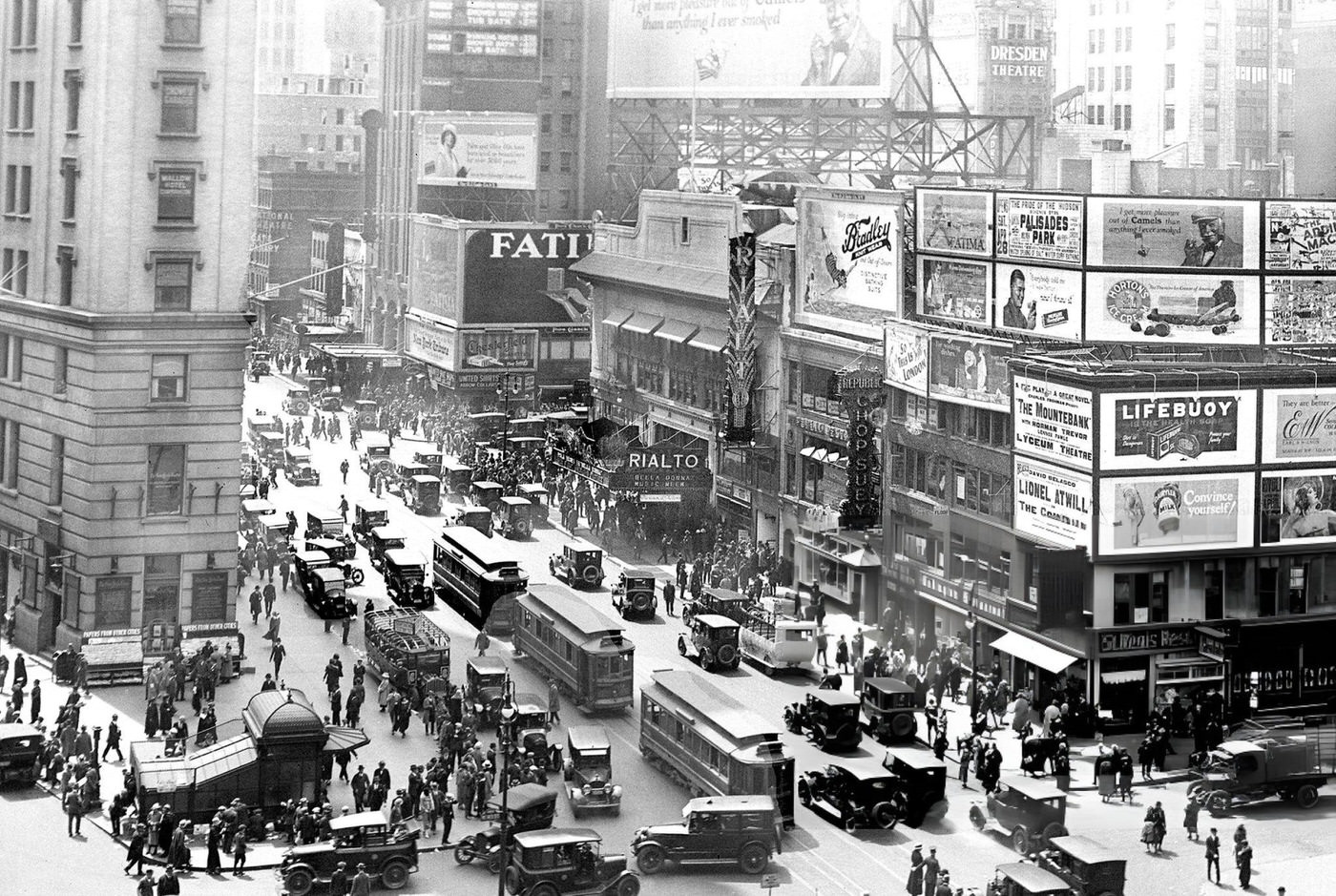
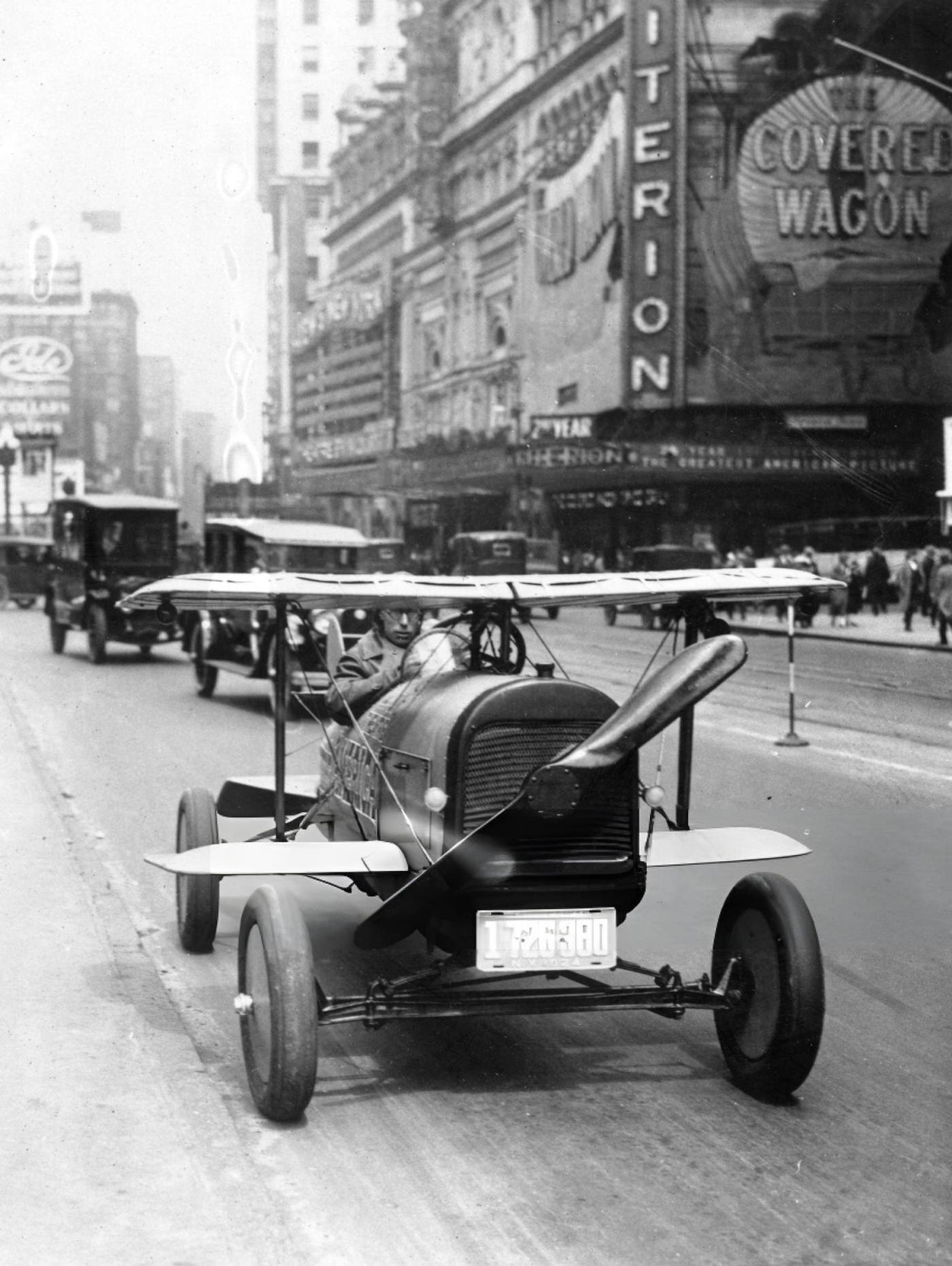

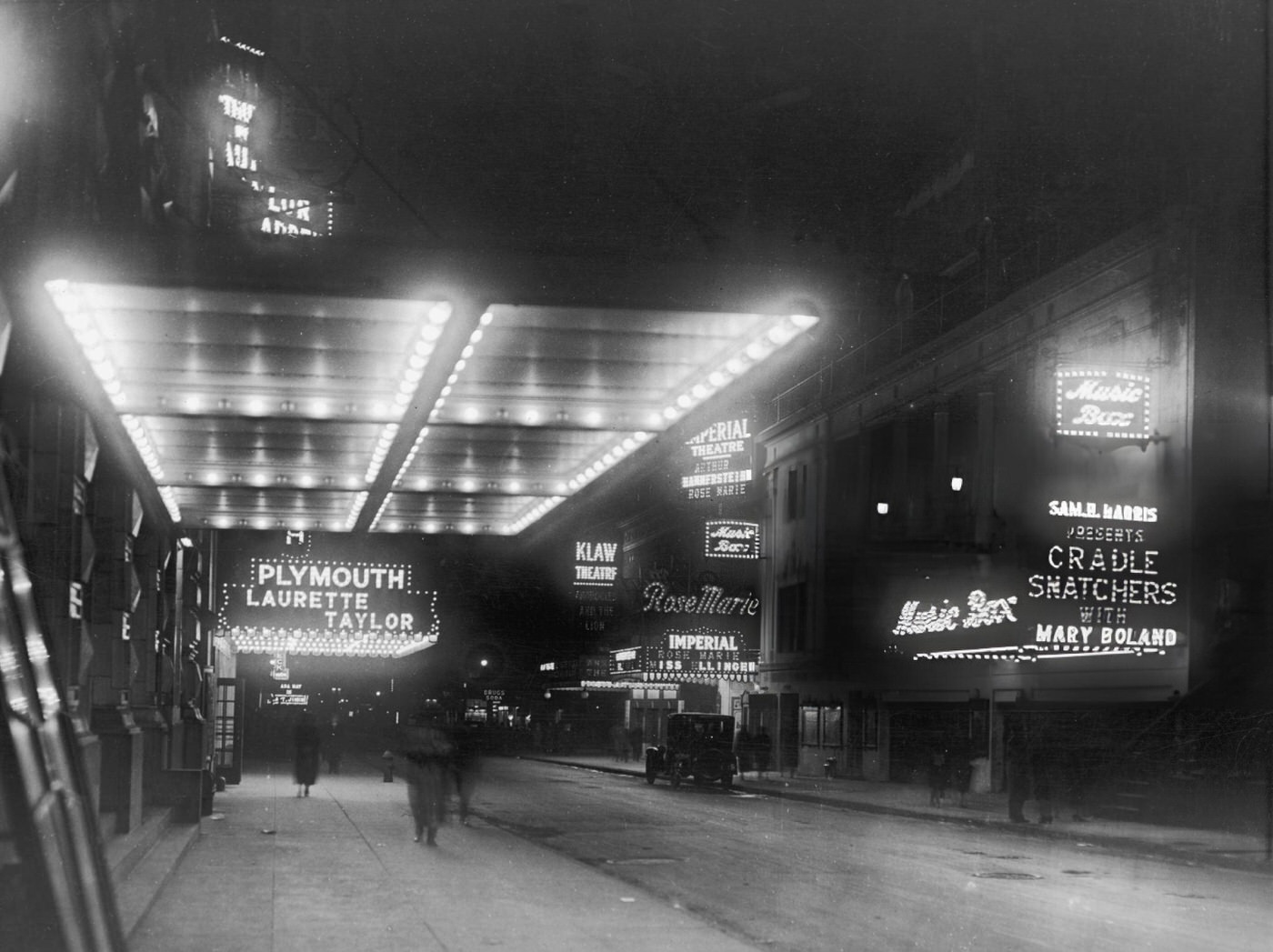

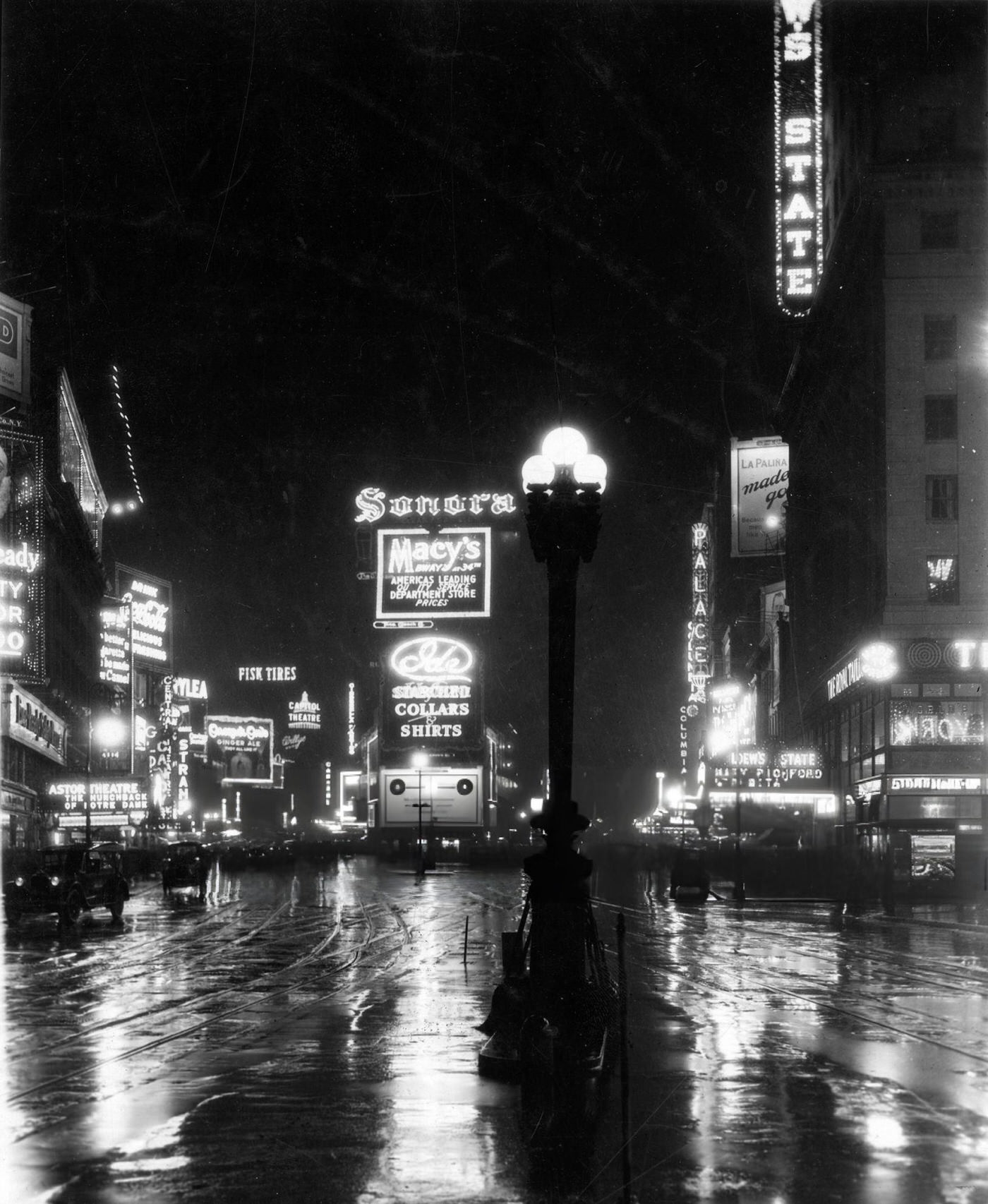
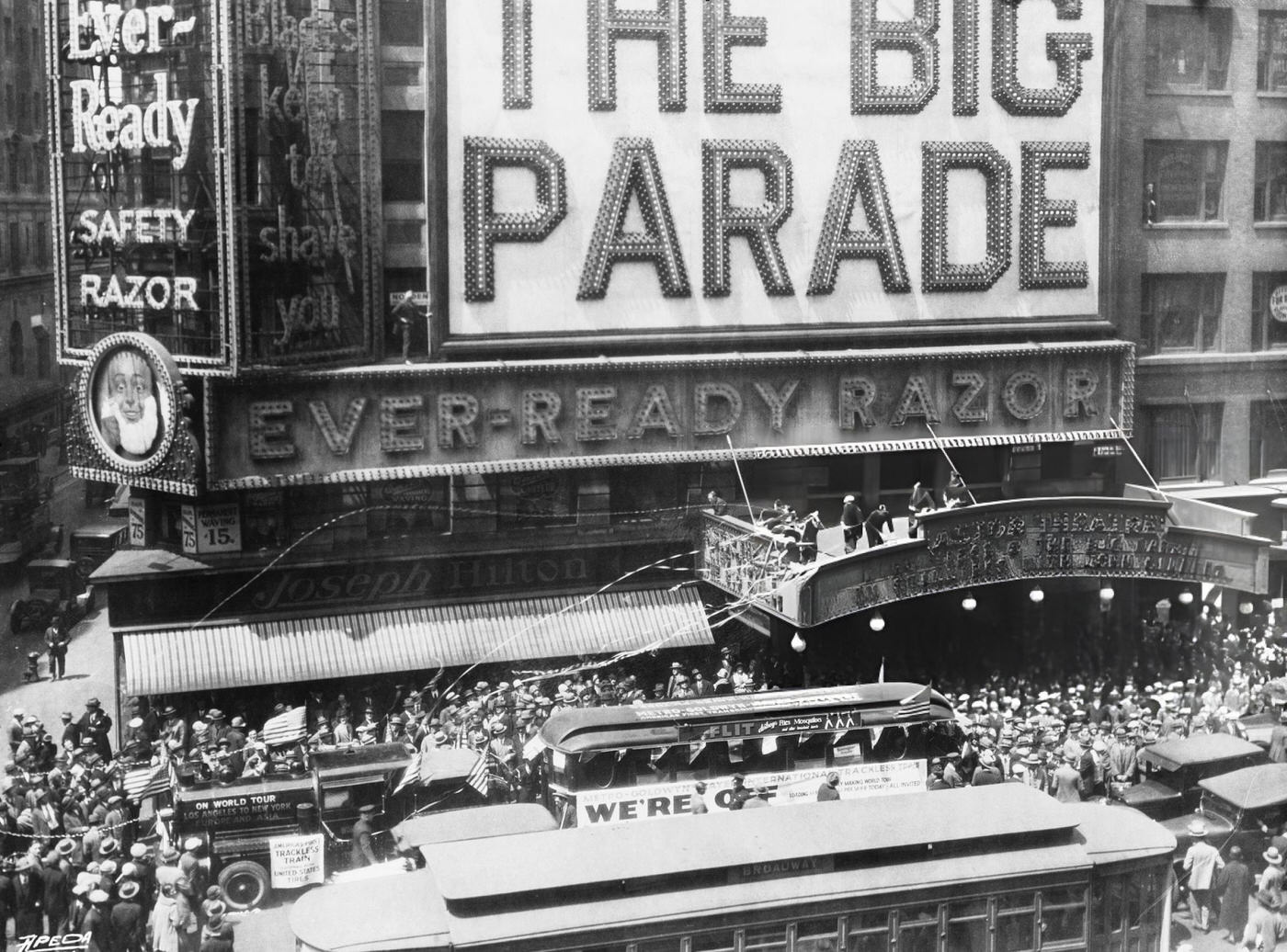
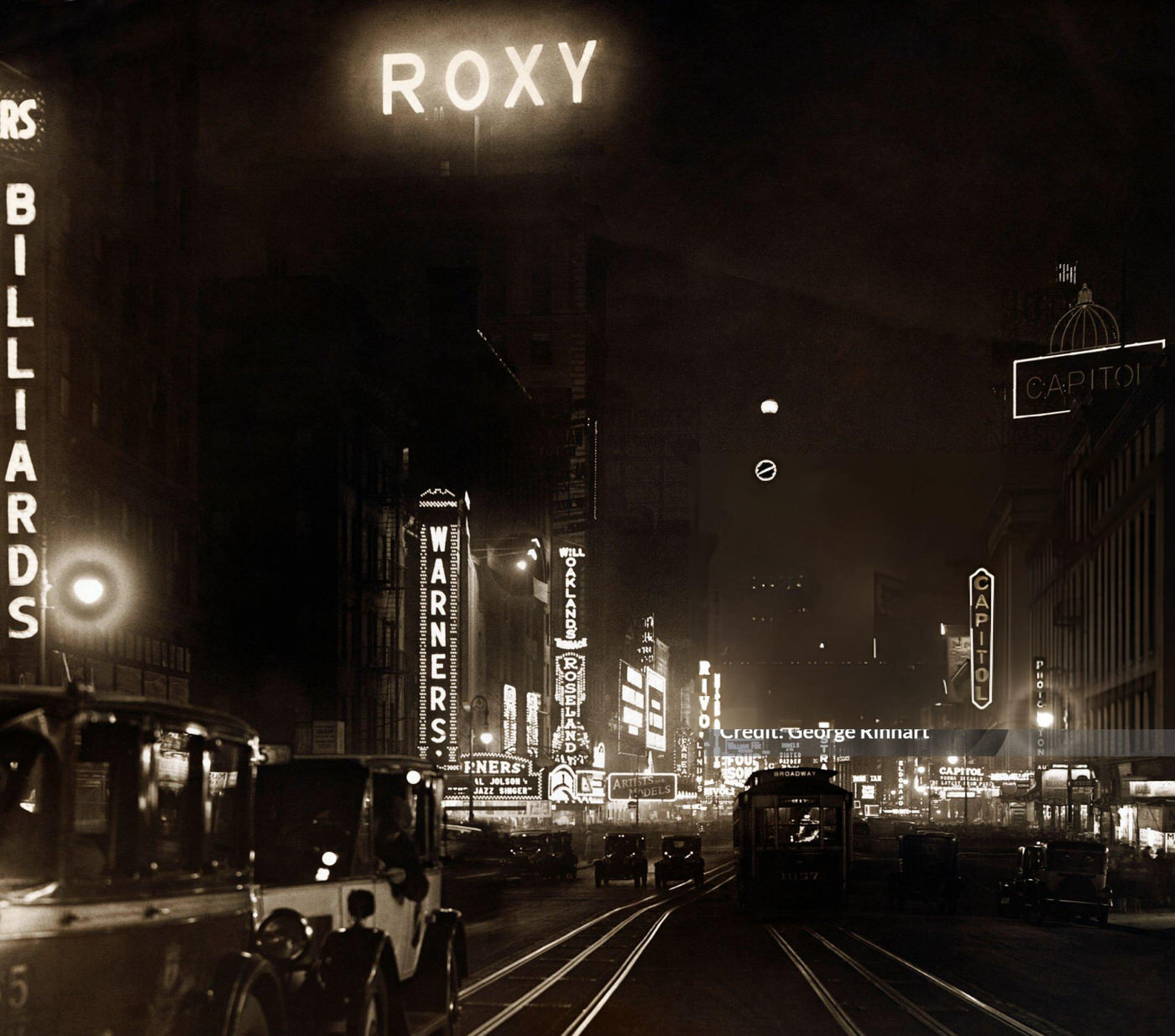
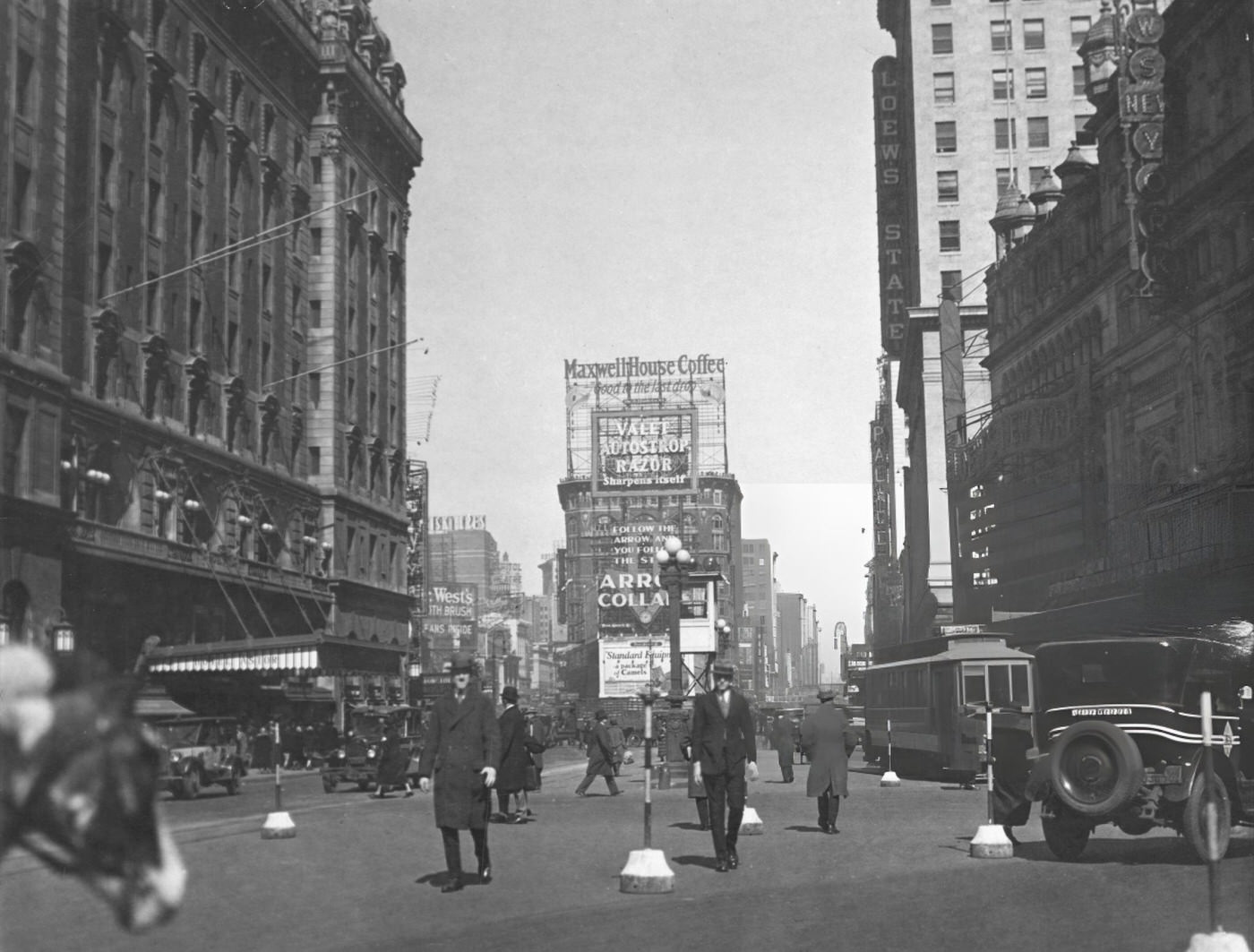
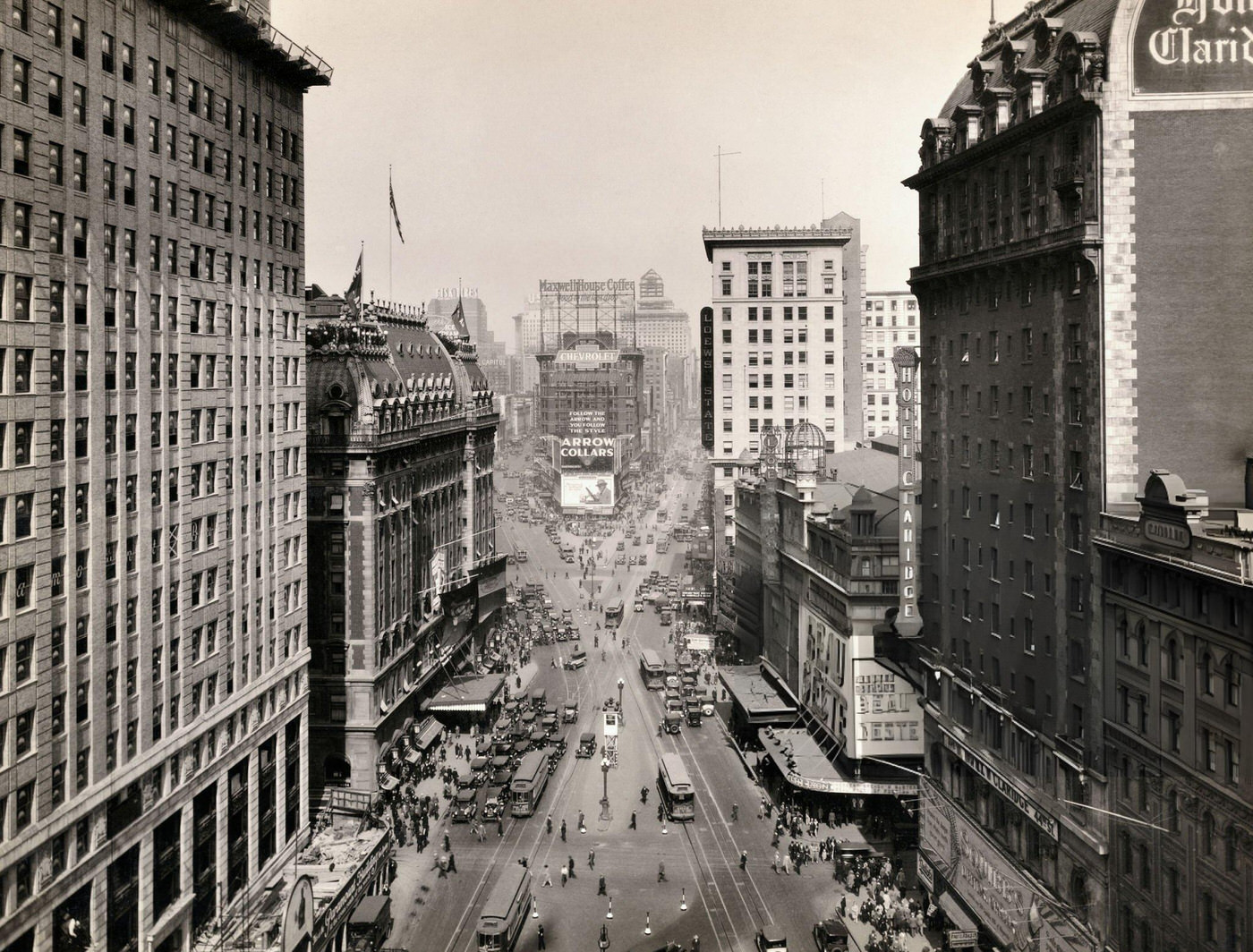
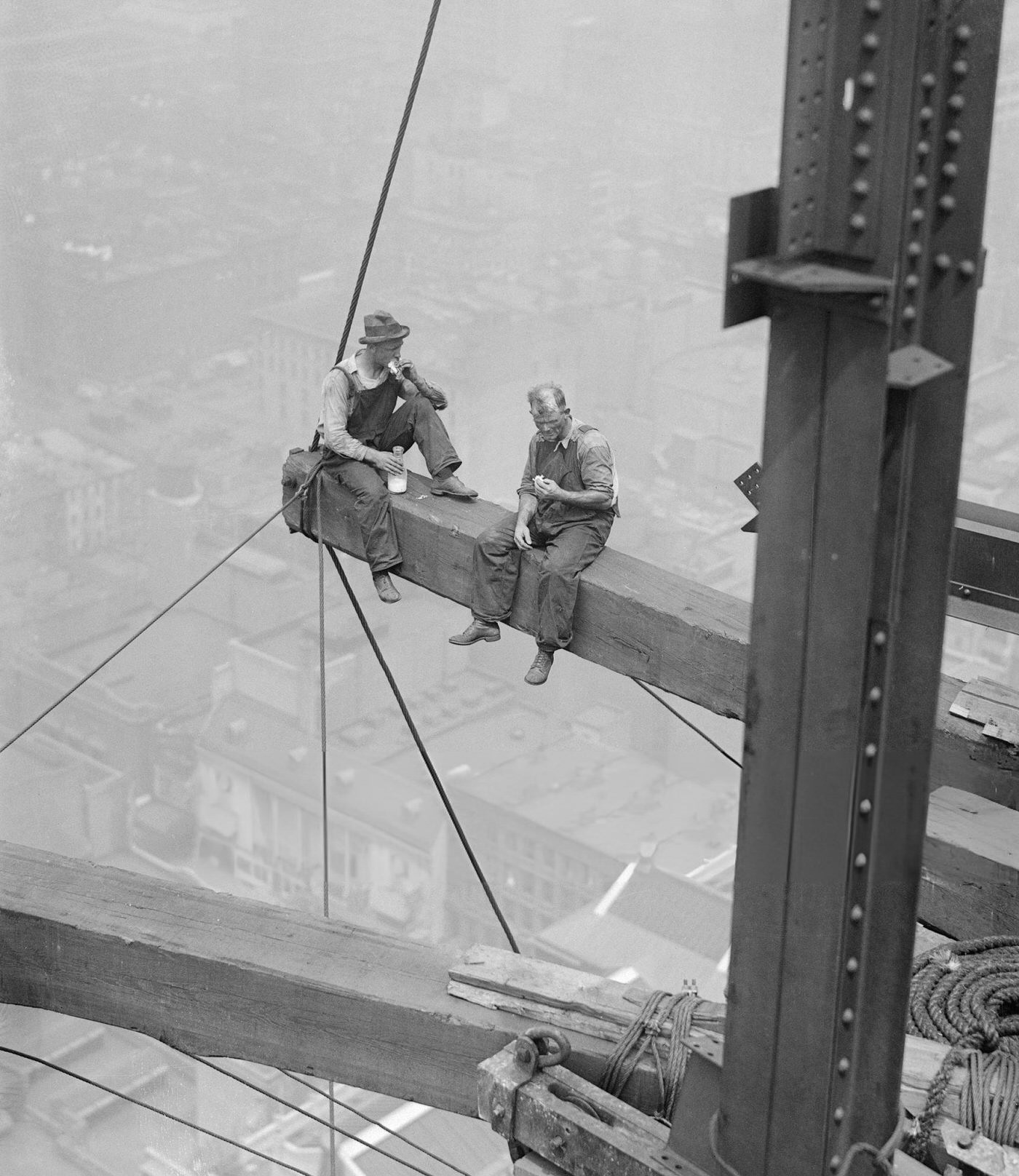
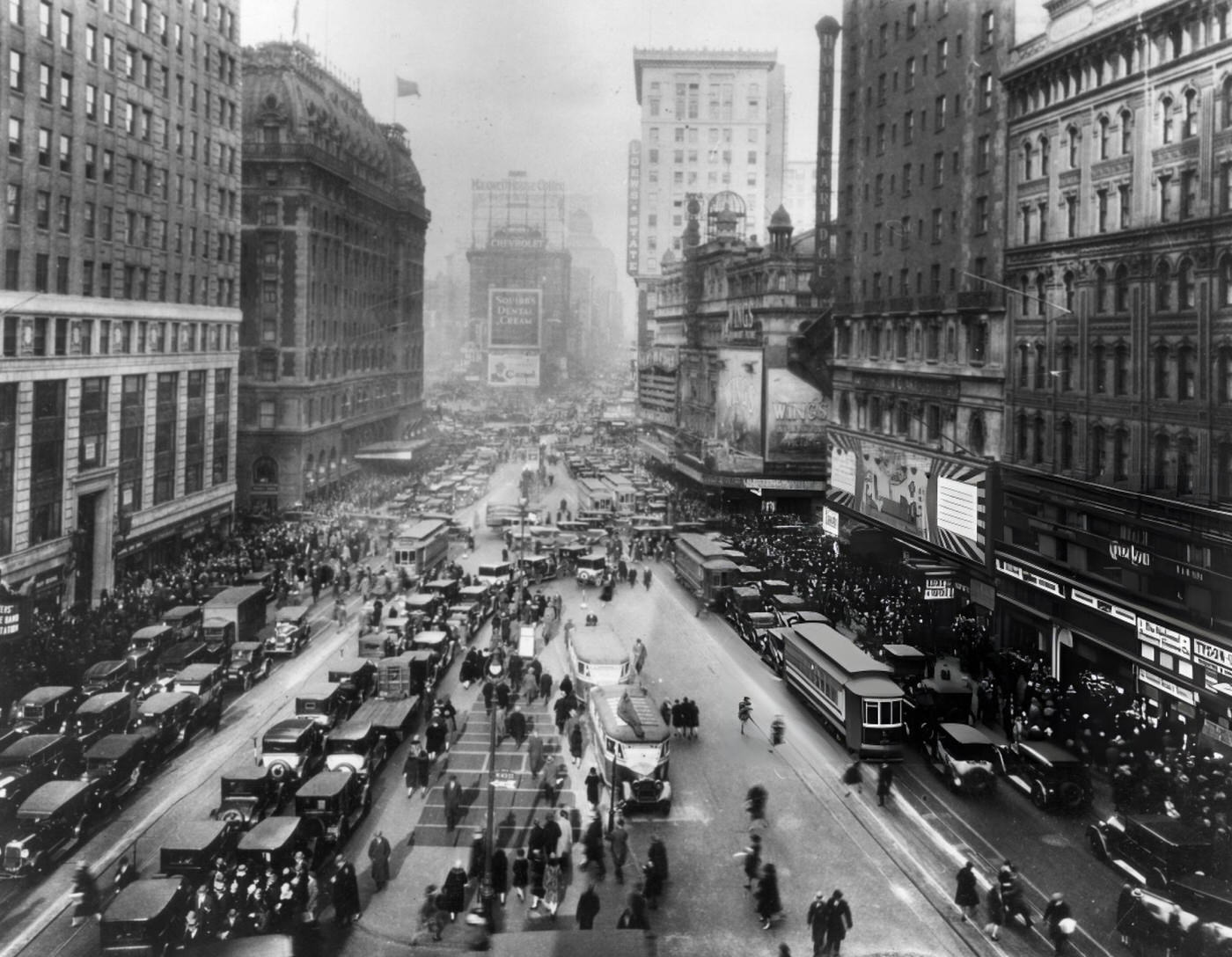
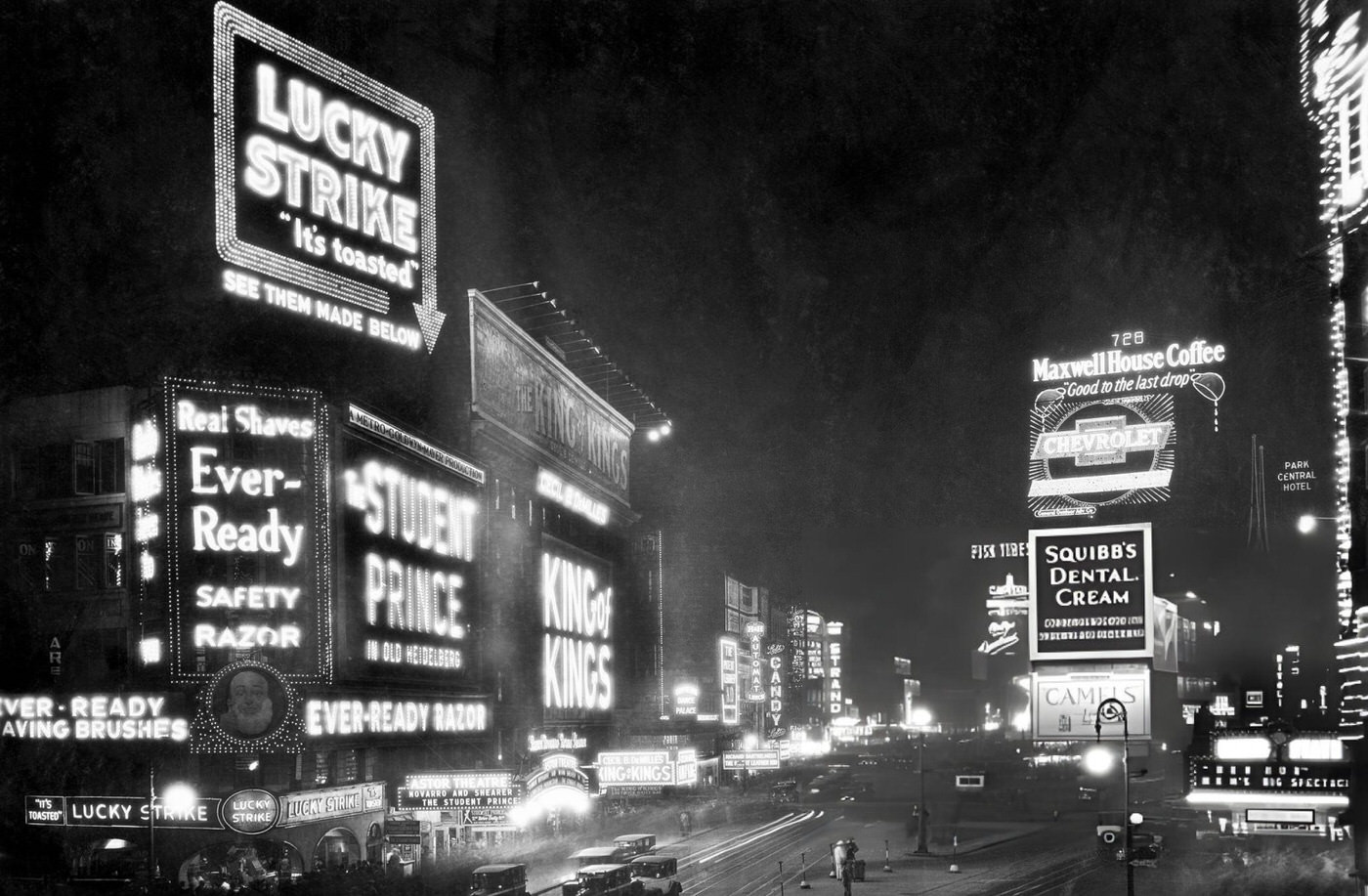

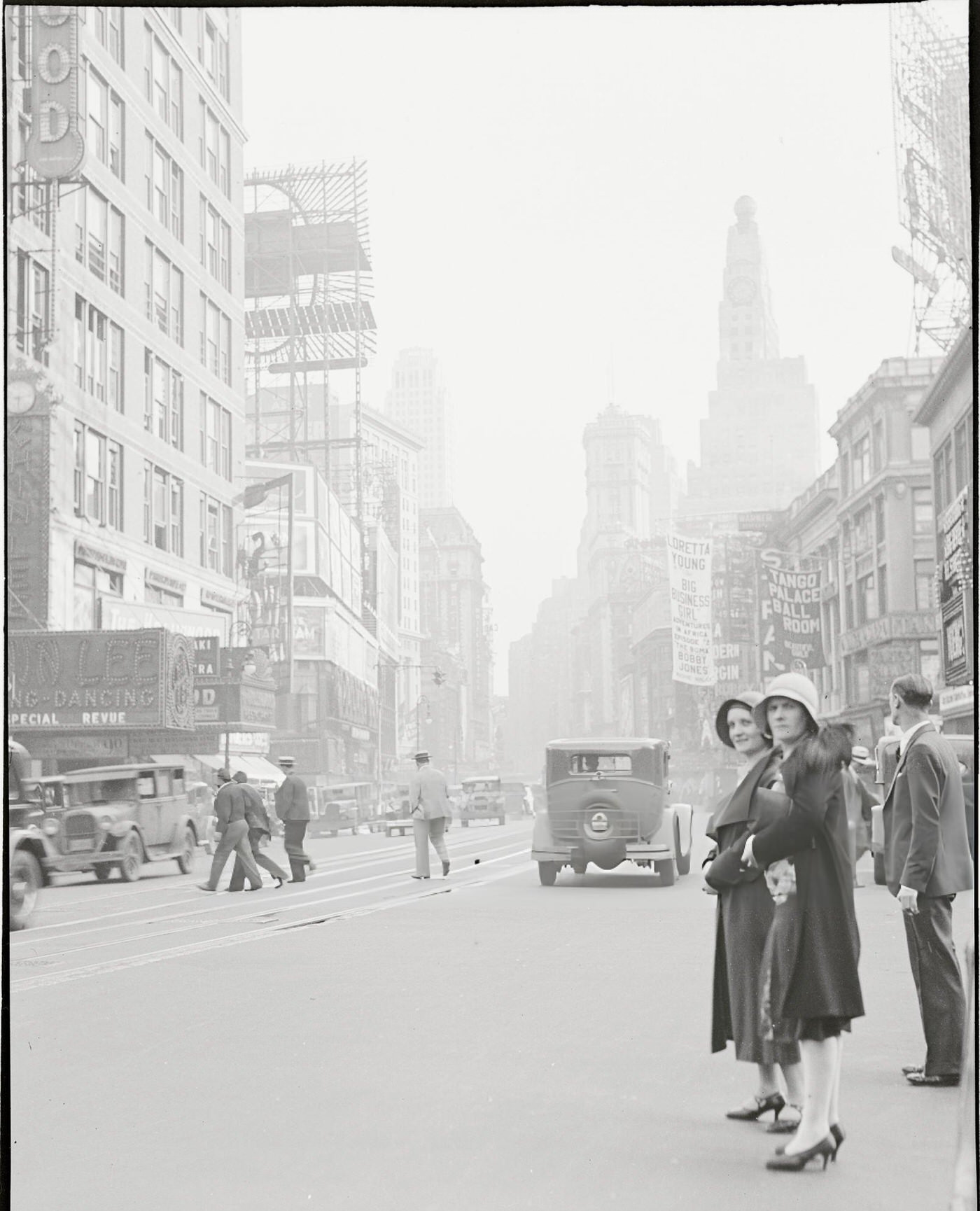

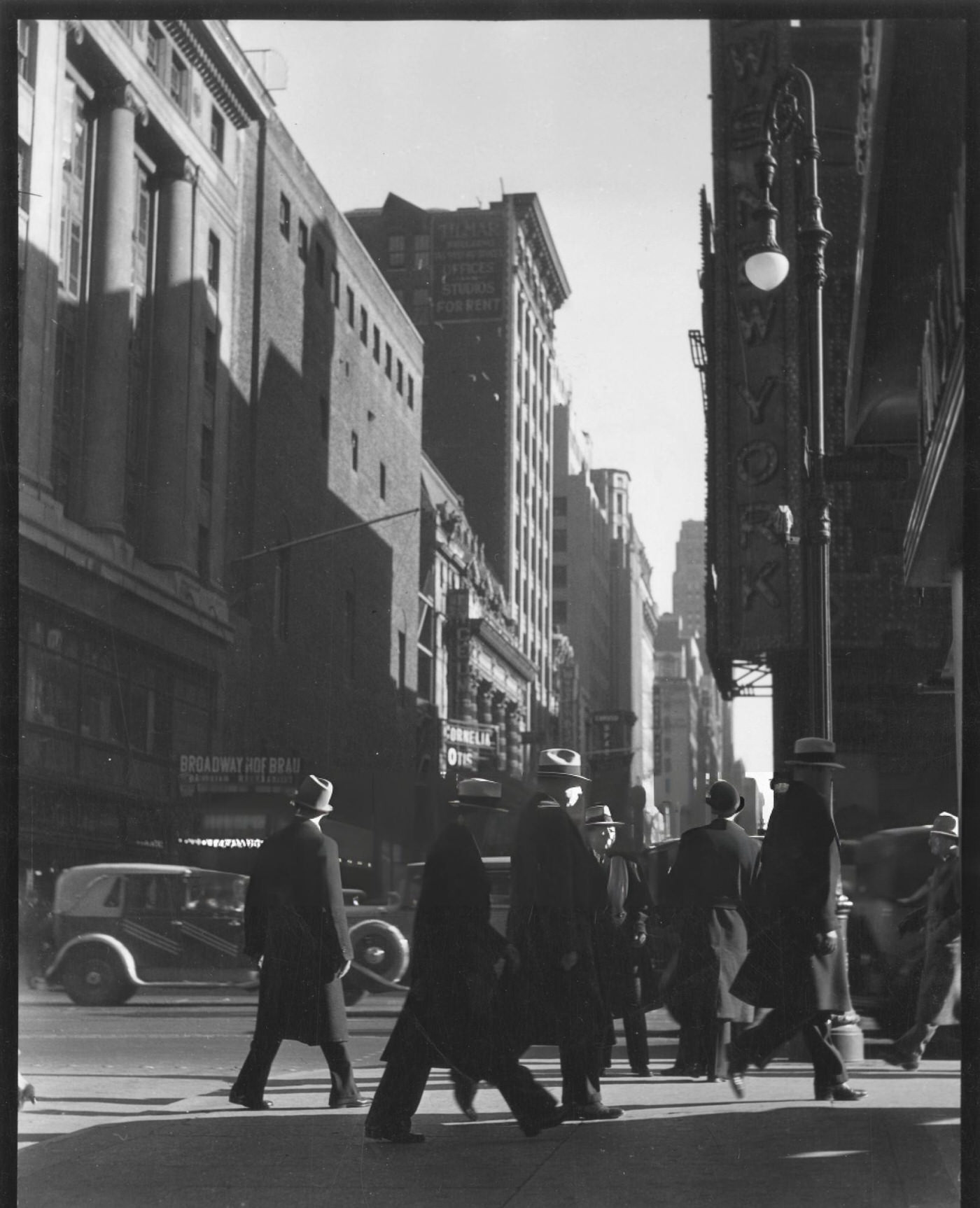
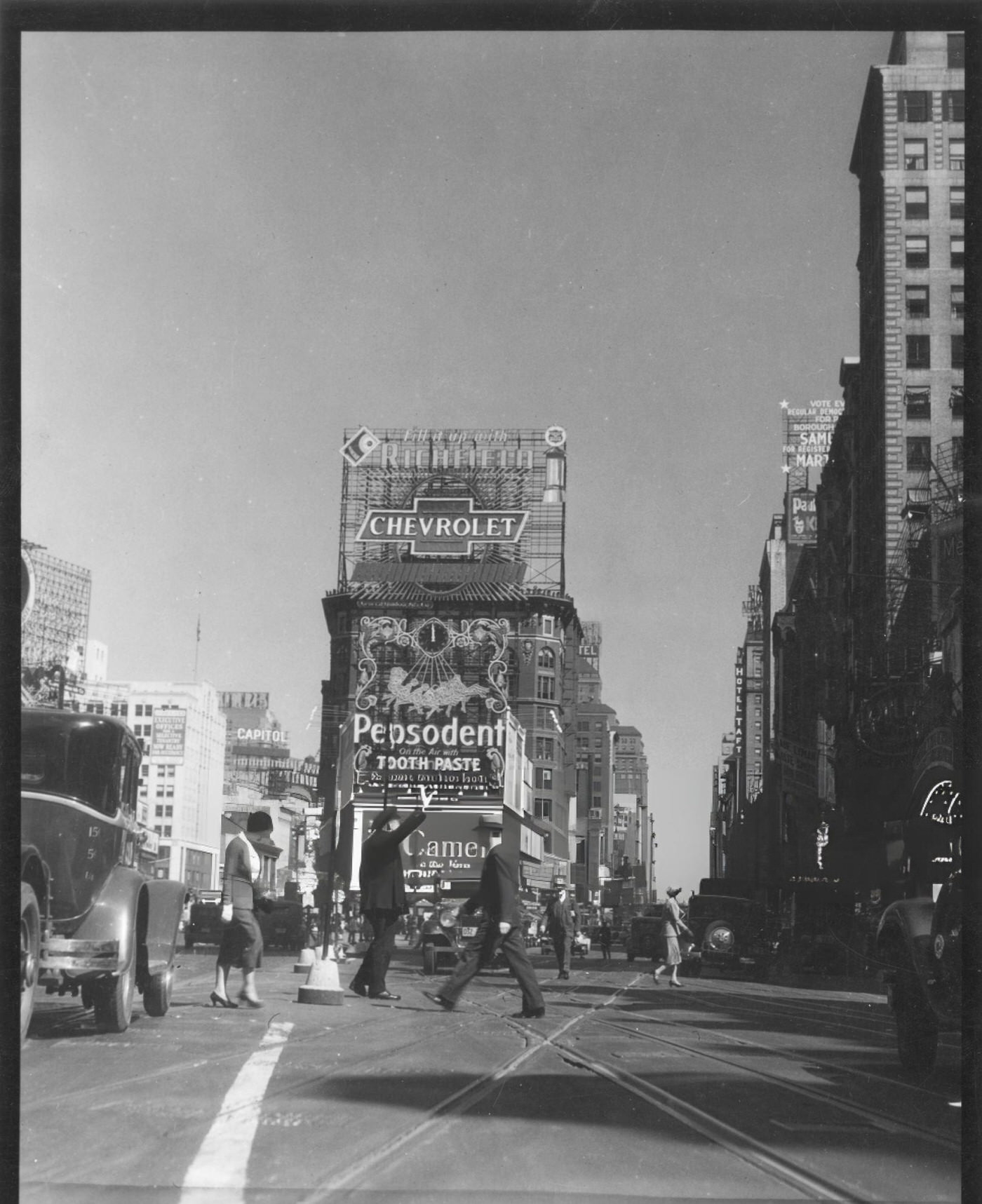


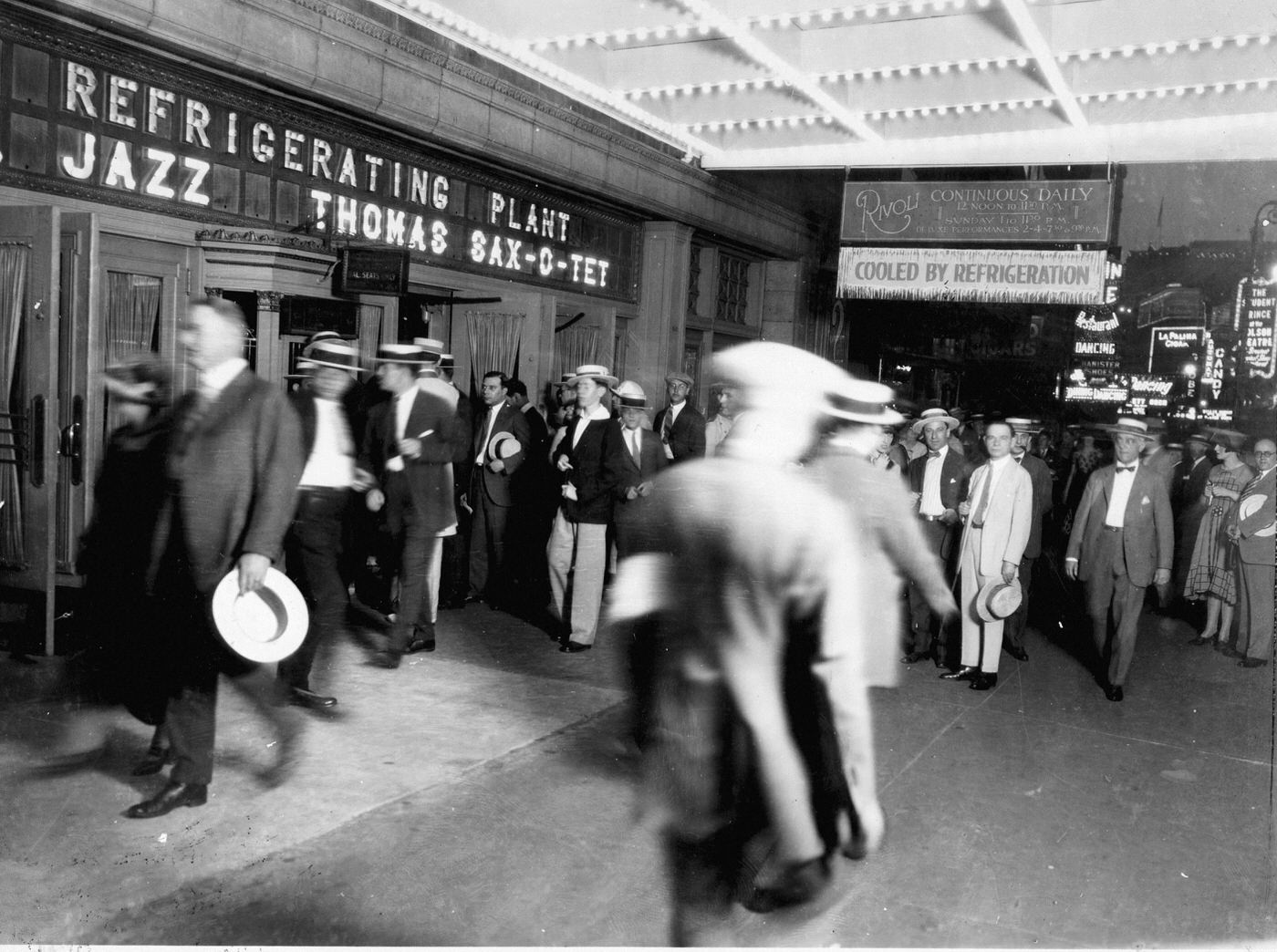

GIPHY App Key not set. Please check settings